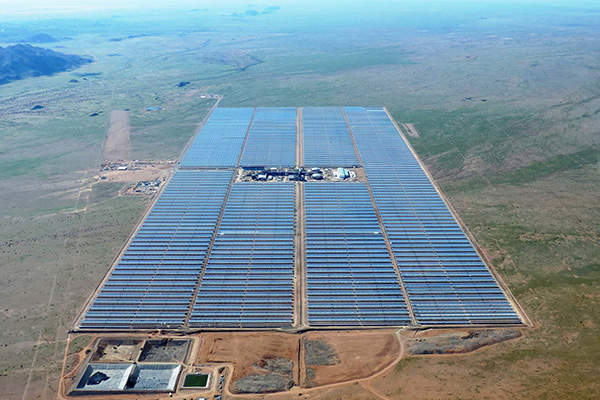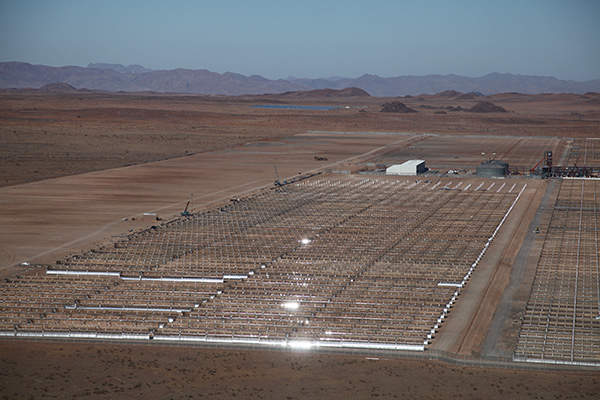KaXu Solar One is a 100MW concentrated solar power (CSP) plant constructed on a 1,100ha site near Pofadder in the Northern Cape province of South Africa. It is the first CSP plant in South Africa to use parabolic trough technology. The project was officially opened in March 2015. It supplies clean energy to approximately 80,000 African homes while offsetting 315,000t of CO₂ emissions a year.
The KaXu Solar One project is jointly owned by Abengoa Solar (51%), state-owned Industrial Development Corporation (IDC, 29%) and a community trust owned by Broad-Based Black Economic Empowerment (BBBEE, 20%).
KaXu Solar One is one of the 28 renewable energy projects announced by the South African Department of Energy (DoE) in 2011. South Africa has set a goal to achieve up to 17,800MW of renewable energy by 2030 in an effort to reduce its dependence on oil and natural gas resources.
Groundbreaking for the project was held in November 2012. The project created 4,500 jobs during the construction phase and 80 permanent jobs during operation.
KaXu Solar One plant make-up
The KaXu Solar One facility encompasses a 310ha solar field installed with 1,200 parabolic trough solar collector assemblies (SCA) supplied by Abengoa Solar and assembled in 300 loops, with each SCA comprised of ten modules.
Related content
Jeffers Bay Wind Farm, Eastern Cape, South Africa
Jeffreys Bay Wind Farm, situated in the Eastern Cape province of South Africa, started commercial operations in July 2014.
The pivoting concave mirrors of the parabolic troughs focus sunlight onto 4m-long evacuated type receiver pipes or heat collection elements (HCE) running along the centre of each trough. The absorbed heat, in turn, heats up the oil flowing through the pipes. The heat transferred through the fluid is used to create steam to drive a 100MW turbine for power generation.
The solar thermal power plant is expected to operate for 20 years, uses the dry cooling method and will provide three hours of thermal storage capacity using a two-tank, indirect molten salt-based thermal energy storage system. The stored thermal energy can be used to generate electricity for five hours after the sun sets.
Power supply from KaXu Solar One
The power generated from the KaXu Solar One plant, which is estimated to be 330,000MWh a year, is sold to the South African electricity utility Eskom under a long-term power purchase agreement.
A 132kV overhead transmission line was built to connect the KaXu Solar One facility to the Eskom Network through Eskom’s Paulputs Transmission Substation in Northern Cape, which is located 5km away from the plant site.
Financing for the CSP power project
The International Finance Corporation (IFC), a member of the World Bank Group, provided direct financing of R1.25bn ($143m) for two CSP projects in South Africa including KaXu Solar One and the 50MW Khi Solar One project, which is also being developed by Abengoa. The IFC also arranged $264m of parallel loans for the construction of these two projects.
The lenders co-ordinated by the IFC for the KaXu Solar One project were the Clean Technology Fund (CTF), Development Bank of Southern Africa (DBSA), FirstRand Bank, IDC and Nedbank.
Contractors involved
Abener and Teyma, two subsidiaries of Abengoa, were jointly awarded the engineering, procurement and construction (EPC) contract for the KaXu Solar One project.
Rioglass manufactured the mirrors and Schott is the supplier of HCEs for the parabolic troughs used in the project. Siemens supplied the steam turbine for the solar thermal power plant. Mott MacDonald conducted the feasibility study for the project.







